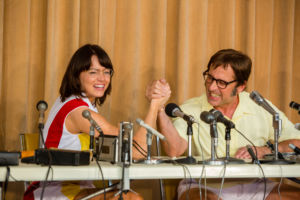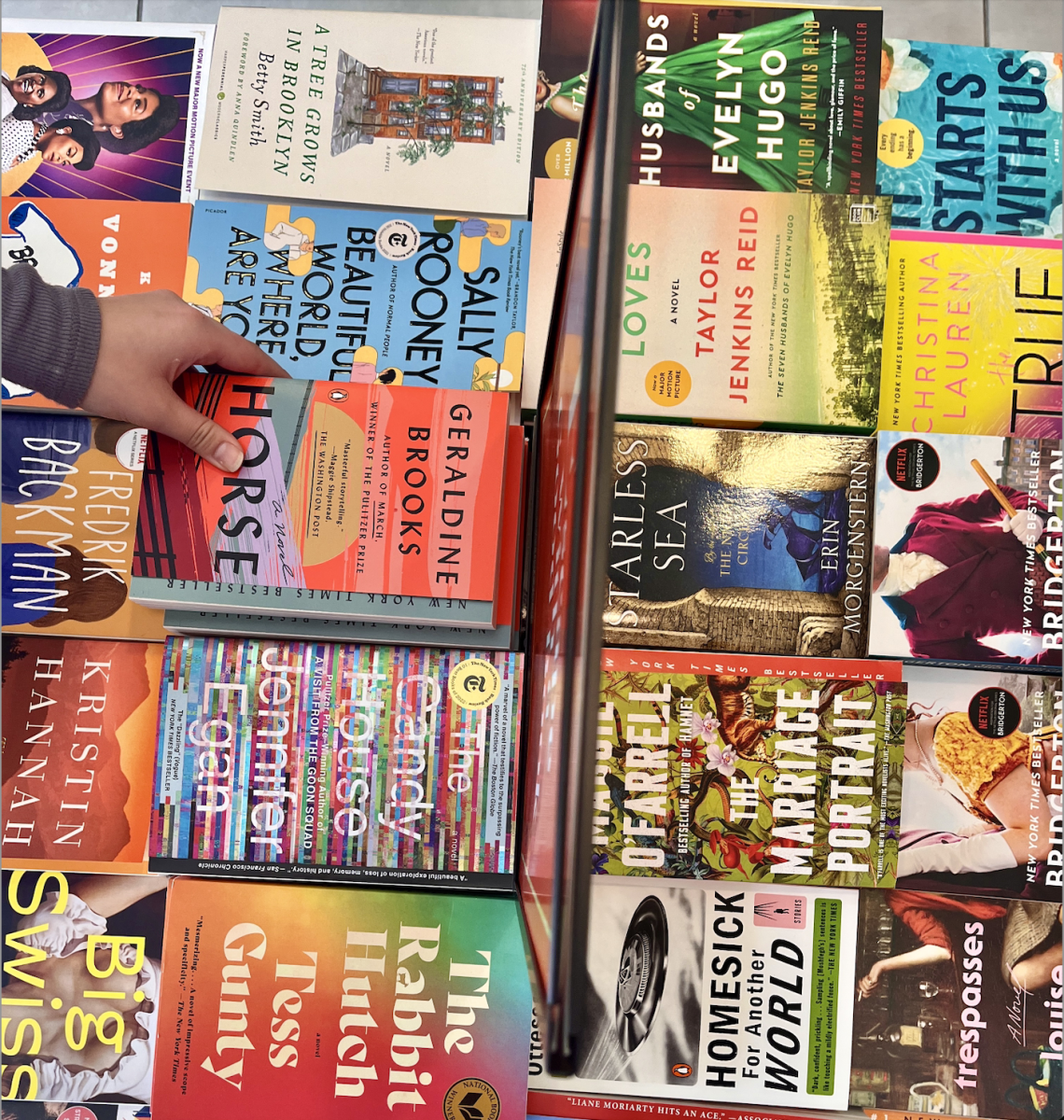Full of powerful women, male chauvinism and enough bright tennis outfits to cause permanent eye damage, “Battle of the Sexes” offers an entertaining and heartwarming portrayal of a real-life fight for gender equality in the realm of sports.
Depicting the highly publicized 1973 tennis match between one of the top female tennis players in the world, Billie Jean King (Emma Stone), and a 55-year-old former Wimbledon Champion, Bobby Riggs (Steve Carell), “Battle of the Sexes” provides a look into the inequality and sexism that pervaded the nation at that time, which is still all too familiar today. Although some of the rougher details of the struggle for equality were glossed over, “Battle of the Sexes” is both easy to fall in love with and thankfully devoid of any moral preaching.
Much of the film is told through juxtaposition, offering an interesting and effective way of telling the stories of two wildly different characters: King and Riggs. This contrast can be seen as soon as the movie begins, as the scenes shift back and forth at a fast pace, providing background information on both King’s and Riggs’ lives.
King is immediately likeable, shown as spirited and lively. In only the first few scenes, we see her being recognized as the first woman to win more than $100,000 in a single year in the sport of tennis and being praised by President Nixon for her achievements. Most importantly, we see her pulling out of the Association of Tennis Professionals to form her own Virginia Slims tour with other female tennis stars when they wouldn’t award women equal prize money.
These scenes are split up by windows into Riggs’ much darker life. We see him watching King on TV as he sits idly in an empty office, leaving his family dinner early to make outrageous bets in the dark on a dimly-lit tennis court and calling King in the middle of the night at a random payphone in an empty parking lot to propose his idea for their match.

These fast-paced scenes at the start effectively highlight the drastic differences between the two lead characters, and these contrasts are continually shown throughout the movie. When King finally agrees to Riggs’ idea of having a “Battle of the Sexes” match to see if women can play at the same caliber as men, their training routines are shown in the same style. Riggs’ scenes are quick and amusing shots of his ridiculous publicity stunts: dressing up as Bo Peep, playing with skillets instead of tennis rackets in his exhibition games or labeling himself a “male chauvinist pig,” while King is shown tirelessly training, a look of determination on her face.
Much of the success of the film is due to Stone’s seemingly effortless portrayal of King. Stone depicts King as a likeable, strong and empowered woman while simultaneously conveying her internal struggle, particularly in navigating her first romantic relationship with a woman, her hairdresser Marilyn Barnett (Andrea Riseborough).
This relationship, though not the driving plot of the film, is strong enough to almost carry the movie on its own. The chemistry between Stone and Riseborough seems natural and easy, and the struggle that King faces both with coming to terms with her sexuality and figuring out how to handle her affair without hurting her husband, is arguably the most captivating aspect of the plot.
Perhaps most interesting about the film is that Riggs is clearly not the antagonist. It is obvious he is acting the way he is simply for publicity, and not because he actually believes in inequality. The real enemy of the film is the society that rewards Riggs for his absurd and sexist behavior. This social commentary is an incredibly important and powerful aspect of “Battle of the Sexes.”
However, while many comparisons have been made between the publicity surrounding the “Battle of the Sexes” tennis match and the last presidential election, directors Valerie Faris and Jonathan Dayton made sure to steer clear of any direct connections between the two. The movie instead focuses solely on the 1973 events.
With that in mind, Carell perfectly portrays Riggs doing what he does best: keeping it light and comical. He expertly depicts the attitude of a man who only wants to be in the spotlight, even if that means being preposterously chauvinist and making a fool of himself.
While Stone and Carell both deserve recognition for their portrayals, the movie could not have succeeded in being so entertaining had it not been for the supporting cast. Sarah Silverman and Natalie Morales’ portrayals of Rosie Casals and Gladys Heldman, respectively, two crucial figures in the success of the Virginia Slims Circuit, added spirit and humor to aspects of the movie that would otherwise have been brought down by King’s serious nature.
The characters are what make this movie the uplifting and entertaining story that it is. A sense of attachment and care for the characters is developed throughout the movie. “Battle of the Sexes” doesn’t spend much time building up suspense to the match between Riggs and King, as would be expected. However, this allows more time to be spent on the seemingly natural character development and while the storyline is predictable, the lives of the characters are engaging enough that the outcome is surprisingly not boring.
“Battle of the Sexes” may have taken place in 1973, but the struggle it depicts is still relevant in society, and is one that needs to continue being discussed. The movie is both uplifting and entertaining, and for that reason alone, it is worth watching. Furthermore, it is important and pertinent. It is rare to find a movie that is light-hearted, funny, spirited and relevant. “Battle of the Sexes” succeeds in all these categories, making it a must-see.
















